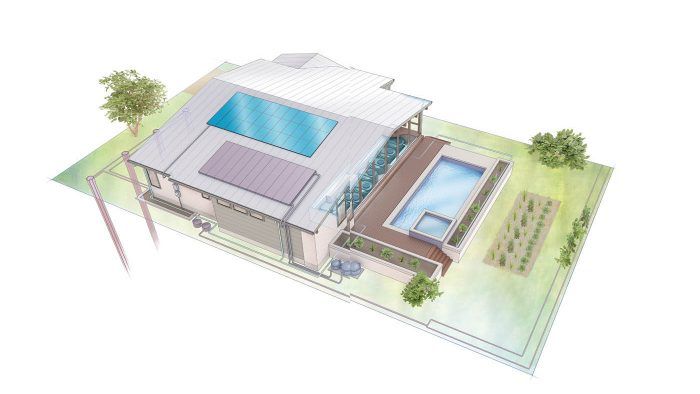Editorial Note: What About Water Conservation?
We talk a lot about air and water barriers when it comes to building science, but why don't we talk more about conserving water?

The building-science enthusiast in me gets really excited about wall and roof assemblies and other building details that demonstrate how to build homes with better energy performance. I always want to know: Where’s the water barrier? The air barrier? What about the vapor and thermal barriers? We discuss these details at length within the pages of Fine Homebuilding magazine and online, advocating for more-resilient buildings that use less energy, with better indoor-air quality and comfort for the occupant as a result.
But why isn’t water conservation a bigger part of the conversation?
My guess is that it has something to do with geography. I live in Minneapolis, in the land of 10,000 lakes, with Lake Superior on the northern border of my state, and I haven’t really had to think much about water conservation, other than what I see in the news. Much of our staff is concentrated in New England, where the idea of regular droughts has only recently become a reality.
But in the western states, and especially the Southwest, the need to conserve water is more of a given in daily life. This fall, the mighty Mississippi river started to run low, impacting the supply chain. We don’t just use water to live, we use it to transport goods and people, too.
This is what intrigued me so much about Jerry Bramwell’s water-conscious remodel in Austin, Texas. I wasn’t surprised to learn that he has the first permitted residential gray-water recycling system in the city. Low-flow fixtures and water-saving toilets are becoming mainstream, but we don’t often see gray-water systems in neighborhood houses.
But implementing ways to use less water, and repurposing the water we do use when we can, makes so much sense. It makes us less vulnerable during droughts, and less effected by water-usage price increases. And, even if you don’t have a drought in your backyard, using less water helps ensure folks who need it have a better shot at getting it.
—Andrew Zoellner, editorial director
RELATED STORIES

























